Rod Miller's Blog, page 27
February 15, 2017
My Favorite Book, Part 6
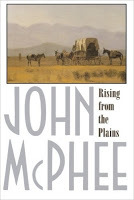
John McPhee is a name you will see here again. He is, without doubt, one of my favorite writers. Some of his books are collections of articles he wrote for The New Yorker, others address a single subject. No matter the subject, if McPhee writes it I will read it. Witness the fact that I have read his books (and many others) on raising oranges, building birch-bark canoes, Bill Bradley, the New Jersey Pine Barrens, the Swiss Army, cargo ships, and the geology of North America—subjects I have no particular interest in but enjoyed immensely reading about.Among my favorite McPhee books is Rising from the Plains, one of five volumes that make up his Pulitzer Prize-winning compilation, Annals of the Former World. The book is about the geology of Wyoming, as seen through McPhee’s travels with geologist David Love. You’ll find that reading about rocks can be fascinating. But Love is also a Wyoming boy who grew up on an isolated ranch when the West was still wild, and those stories are just as engaging as the tales about traces of the Triassic on the landscape.
This is about high-country geology and a Rocky Mountain regional geologist. I raise that semaphore here at the start so no one will feel misled by an opening passage in which a slim young woman who is not in any sense a geologist steps down from a train in Rawlins, Wyoming, in order to go north by stagecoach into country that was still very much the Old West.
So begins Rising from the Plains by John McPhee. How can you not read on?
Published on February 15, 2017 06:20
February 4, 2017
Lies They Tell Writers, Part 36: Plan Your Plot, Organize Your Outline.

Many fiction writers plan out a story in great detail before writing the first word. And many writing instructors teach the hows and whys of plotting and outlining. They swear by the process, claiming it provides discipline and keeps you on track. If you plot and outline well enough, you’re less likely to wander off on tangents or let the story ramble down paths not of your choosing.But it’s not the only way to write. And, for some, not the best way to write. While every story starts somewhere, and the writer likely has some idea about where it’s going, many writers know little else about it. They like to let the story find itself, rely on the characters to drive the action, and allow causes to create their own effects and conflicts to reach their own resolution. That’s the way I like to write. In fact, as I write this I am about 50,000 words into a novel, and while the story and characters have decided what happens next (as they have, for the most part, all along the way), what follows after that is pretty hazy, and where it will end is unknown—at least to me.There’s a quotation by Ray Bradbury that sums up this approach to writing a book: “Go to the edge of the cliff and jump off. Build your wings on the way down.” E.L. Doctorow said something similar: “Writing is like driving at night in the fog. You can only see as far as your headlights, but you can make the whole trip that way.”I trust that, at some point, the fog will clear and book I am working on will eventually reach its destination.
P.S. It did.
Published on February 04, 2017 07:35
January 26, 2017
Let’s start the conversation.

Not long ago, within my not-so-distant memory, people used to talk. We’d chat. We’d have discussions. And, curse of curses, hoity-toity folks would dialogue. Now, we have “conversations.” We used to be asked for our two cents’ worth. Now, we’re asked to “join the conversation.” Reporters used to conduct interviews. Now, they engage in “conversations” with their subjects. Radio talk show hosts used to take calls. Now, they “invite another voice into the conversation.” Internet discussion groups used to have forums. Now, they have “conversations.” Even arguments and debates and disagreements are “conversations.” What is it about the word “conversation”? How is it that it has wormed its way into so many places in our language once described by perfectly good, and often more precise, words? I suspect it’s because the people who use it think it sounds friendlier. And few people can resist warm and fuzzy, even at the expense of clarity. What do you think? Let’s start the conversation about conversation.
Published on January 26, 2017 13:17
January 17, 2017
Sad Song.
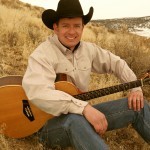
Writing a song is an odd accomplishment for someone who couldn’t carry a tune with a packsaddle. Still and all, lacking good sense, some time ago I thought to try it—and award-winning singer and songwriter Brenn Hill came to the rescue and made it reality.I have long been obsessed with the Bear River Massacre. Events of that tragic day in 1863 have found their way into my poems, short stories, and an entire nonfiction book. Despite ignorance of the ways and means of music, being the curious sort I wondered if I could write a song about it.
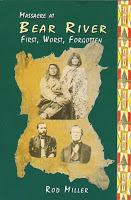
The jumble of words that resulted seemed to have possibilities so I inflicted it on the good graces of my friend Brenn, without any real expectation that anything would result. Lo and behold, a few days later he sent me an audio file labeled “And the River Ran Red”—the title I had given the piece. Brenn re-engineered some of the words to meet the demands of lyrical structure and set it to a beautiful tune as haunting as the massacre itself.
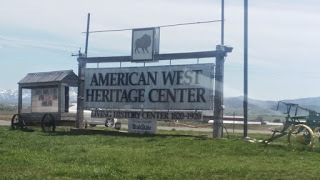
On February 10 and 11 (2017, of course), Brenn is headlining Valentine’s Day weekend concerts at the American West Heritage Center in Utah’s Cache Valley—between Wellsville and Logan, and some 36 miles south of the Bear River Massacre site. And, he tells me, the audience will experience the first performance of “And the River Ran Red” as part of the concert. I can’t wait. Join us.
Published on January 17, 2017 09:24
January 4, 2017
My Favorite Book, Part 5
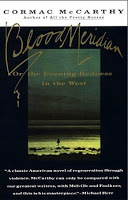
Cormac McCarthy is, to say the least, a divisive author. I know many readers (and writers) who, like me, admire his books. And I know many equally capable readers and writers who do not like him, for a variety of reasons.McCarthy has little respect for the conventions of punctuation. He’s big on ambiguity. He often circles around a scene and sneaks up on you rather than confronting you head-on. He is not easy.But, to quote Kurt Vonnegut, another author I admire, “So it goes.”Blood Meridian, Or, The Evening Redness in the West, is among my favorite books and my favorite by McCarthy. Professor, author, and literary critic Harold Bloom calls it “the ultimate Western, not to be surpassed.” This, despite the fact that he was so overwhelmed by the book’s violence he set it aside twice before finally finishing it. And there’s no question it is a violent book. It’s based on history—the exploits of a band of murderous scalp hunters operating in the American Southwest and northern Mexico. Whether it’s violence or just about anything else he’s writing about, McCarthy has a way of saying things that’s unsurpassed. His descriptions are so spare, yet vivid, they surprise you—forcing me, at least, to re-read passages for their beautiful language.Bloom also has this to say about Blood Meridian: “The book’s magnificence—its language, landscape, persons, conceptions—at last transcends the violence, and converts goriness into terrifying art, an art comparable to Melville’s and to Faulkner’s.”Not bad comparisons for a Western novel.
Published on January 04, 2017 13:59
December 26, 2016
Lies They Tell Writers, Part 35: Nobody reads anymore.

A lot of the advice you get as a writer is discouraging: Writing a book is hard work. Publishers won’t read your manuscript. Self-published books don’t sell. Bookstores won’t stock your books. Nobody reads anymore.There’s an element of truth in all those disheartening claims. Except the last one. I don’t know how many times I’ve been told that nobody reads anymore. It’s usually attributed to all the other distractions competing for former readers’ time: TV, movies, music, video games, social media, and so on and so on. But, the fact is, according to the Pew Research Center, 73% of adults in the United States read a book in the past 12 months. And that hasn’t changed much over the past five years. Most of them—65%—read a printed book, 28% read an ebook, and 14% listened to an audiobook. Not only are people reading, they’re reading (and listening to) multiple formats (which is why that adds up to 107%). How much Americans read is also holding steady. Readers read an average of 12 books a year, with the “typical” reader getting through four books. Obviously, readers like me are pushing up the average—in the past year I’ve read somewhere around 60 or 70 books. There’s no doubt people are still reading. I only wish they were reading my books.
Published on December 26, 2016 06:33
December 16, 2016
Road trips.

If I were to wake up tomorrow and discover I had become wealthy overnight there’s not much I would change about my life.Except one thing. I would travel. A lot. There are many, many places around the American West I have yet to see but would like to. There are Civil War sites in the Southeast. Things in New England I’ve missed out on. I’d like to go back to England sometime, and Australia beckons, but other than that I would be content to stay within the States—mostly those Out West—save an occasional foray into Canada and Mexico in pursuit of history. Most of my travel would be behind the wheel of a car. I like road trips. My wife tolerates them. She has what she calls “carcolepsy”—a condition that puts her to sleep when a car exceeds 40 miles an hour. She doesn’t think she misses much. Me, I like most everything I see through the windshield.Way back when, there was a short-lived television show I liked called Then Came Bronson. It starred actor, songwriter, and singer Michael Parks as he rode around at random on a motorcycle. I still hear the theme song he wrote for the show in my head. The first two lines, in particular:
Going down that long lonesome highway Bound for the mountains and the plains
Published on December 16, 2016 07:17
December 6, 2016
History meets humility.

History is a messy subject. It’s never as simple as it ought to be. We tend to view history in black and white terms—good guys and bad guys, winners and losers, virtue and evil, right and wrong. That’s particularly true when it comes to the history of something or someone near and dear to our hearts—our country, our people, our families. And it doesn’t stop there. This simplistic view of history devolves to the point that all semblance of actual knowledge gives way to belief, even wishful thinking. And intellectual laziness. I read somewhere that instead of attempting to know what happened (which is no simple task), we cling to what we thinkhappened, even what we wish had happened (which is much easier). I once heard a radio interview with British actor Hugh Laurie. (House, Stuart Little, Jeeves and Wooster, Black Adder.) I remember only one thing he said, and it’s something I will never forget: “We must be humble in the face of facts.”That bit of wisdom certainly applies to history. The facts of history—such as they are—are often uncomfortable. They sometimes contradict what we think (or wish or hope) happened. We squirm. We sweat. We tie ourselves in emotional knots. Our hearts and minds rebel. But, eventually, we must come to terms with a revised reality. Facts, in fact, can change our entire way of thinking—as they should, like it or not, if we follow Hugh Laurie’s advice. What happened back when happened. We ought to know the facts of the matter as much as we can, with the knowledge that more facts may come to light and alter our understanding. But that’s what humility is all about when it comes to history—basing the knowledge we have on facts rather than beliefs, and knowing that what we don’t know always outweighs what we do.
Published on December 06, 2016 03:28
November 25, 2016
My Favorite Book, Part 4
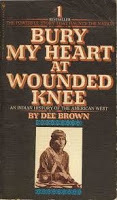
Plenty of historians pooh-pooh Dee Brown’s Bury My Heart at Wounded Knee, complaining, among other things, it’s one-sided. Two things about that.First of all, Brown’s stated intention was to present the history of westward expansion from the perspective of the Indian tribes, which he did. Second, it’s not as if the histories scholars had given us until that time were in any sense balanced. In fact, virtually no historian gave a fig about the Indian side of things until Brigham Madsen started researching and writing about it back in the 1950s. And very few followed suit until Brown’s book popularized the approach. All that aside, Brown’s book opened the eyes of many Americans when it was released back in 1970. It certainly opened mine when I read it a year or two later while in college. (I wore out the mass-market paperback I bought back then and years ago upgraded to a trade paperback edition.) It was—and is—fascinating reading. Engaging, certainly, and informative. Even entertaining, though not in the traditional sense. If you haven’t read Bury My Heart at Wounded Knee do so. It’s still in print and readily available all these years later. And don’t worry if you find it not exactly balanced—there are shelves full of history books that upset the scales in the other direction.
Published on November 25, 2016 06:37
November 16, 2016
Lies They Tell Writers, Part 34: Descriptions, Details, and Depictions.

Be descriptive. Use adjectives. Depict people and places in great detail. Be specific. Writers hear those instructions all the time. We covered character descriptions a few “Lies” back, and this edition continues the theme. “Descriptive writing” is not necessarily bad advice, but a common mistake inexperienced writers make is listening too well and overdoing it as a result. From time to time I am asked to judge writing contests. Some entries suffer from a malady I call adjective cancer. In prose suffering this condition, few nouns escape without carrying an adjective and some are burdened with compound adjectives. Here’s an excerpt from a story that demonstrates the diagnosis:
The six-foot-two guide knelt in the rear of the fourteen-foot dark green canoe, his well-developed body rippling under his soggy white t-shirt while he worked the paddle. He shivered in the early morning air, the icy rain numbed his face, and water dripped off the bill of his blue UCLA cap. The neoprene gloves kept his hands from freezing.
I changed things up a bit to protect the patient’s identity, but not enough to treat the disease or relieve the symptoms. That’s what it reads like. Really. For page after page.Now, I have no formal training in creative writing. Fact is, I’ve never taken a class in the subject. It’s altogether possible, then, that I am up in the (dark and dreary) night. But the kind of writing I prefer uses adjectives sparingly and allows the reader to participate in painting the picture. Abuse of adjectives not only excludes readers from imagining the scene, it bogs down the story. Strunk and White say it best in The Elements of Style: “Write with nouns and verbs.” I’ll buy that. Give me spare, clean writing without a lot of adjectives every time (he said, using adjectives).Don’t even ask me about adverbs.
Published on November 16, 2016 10:00



